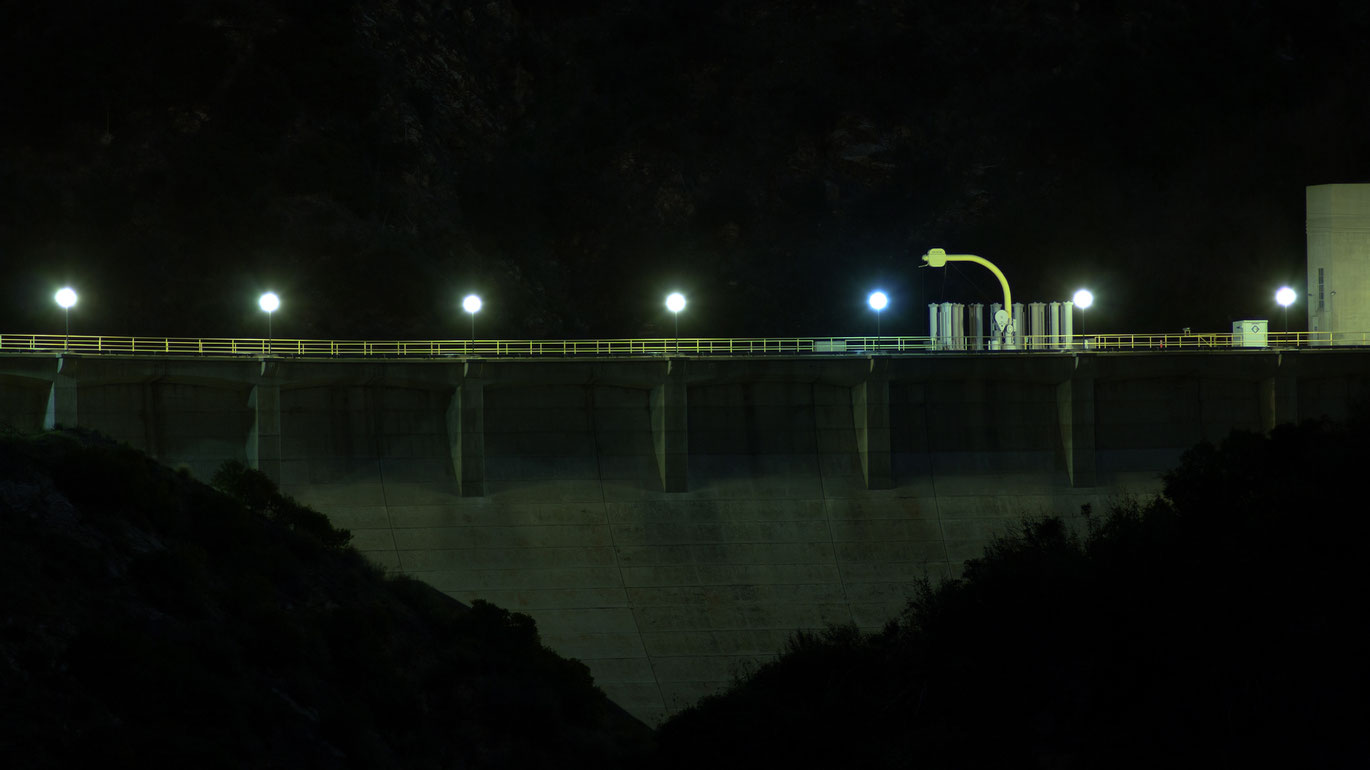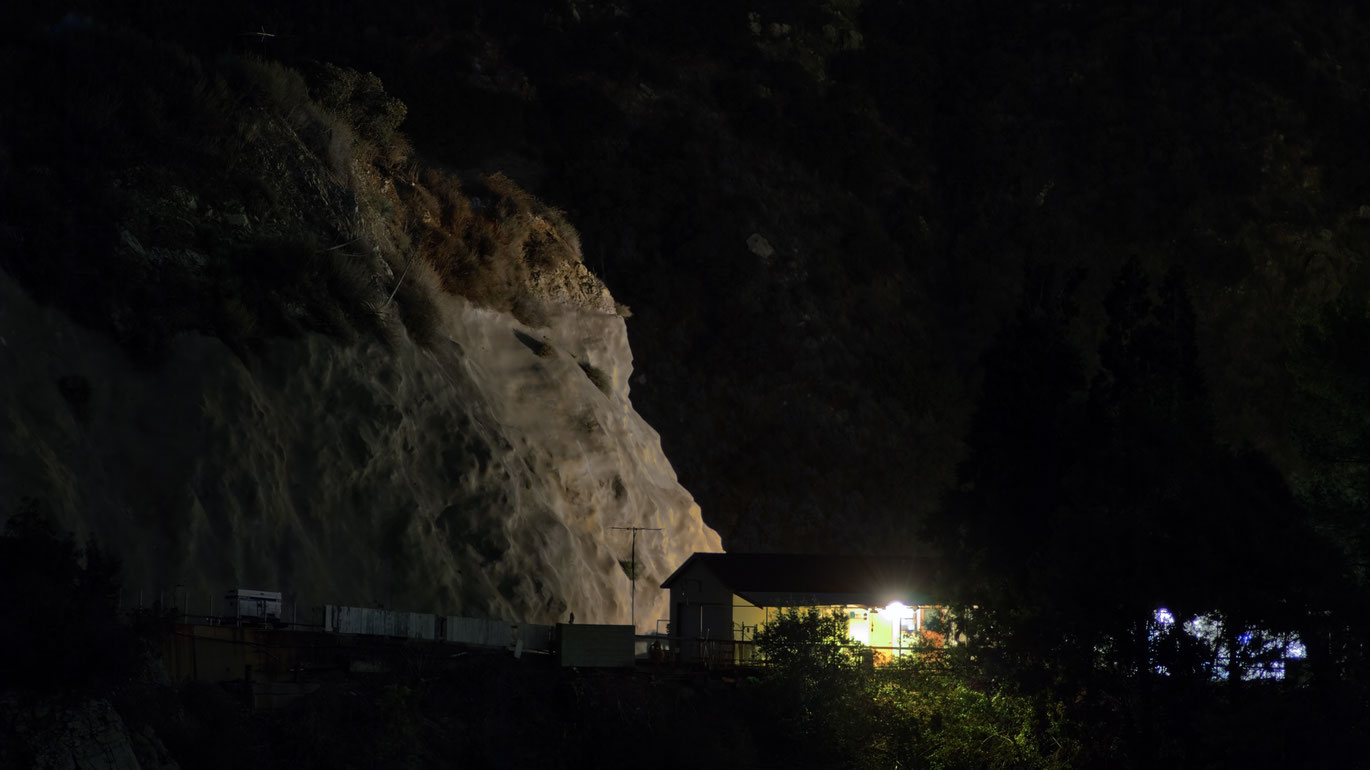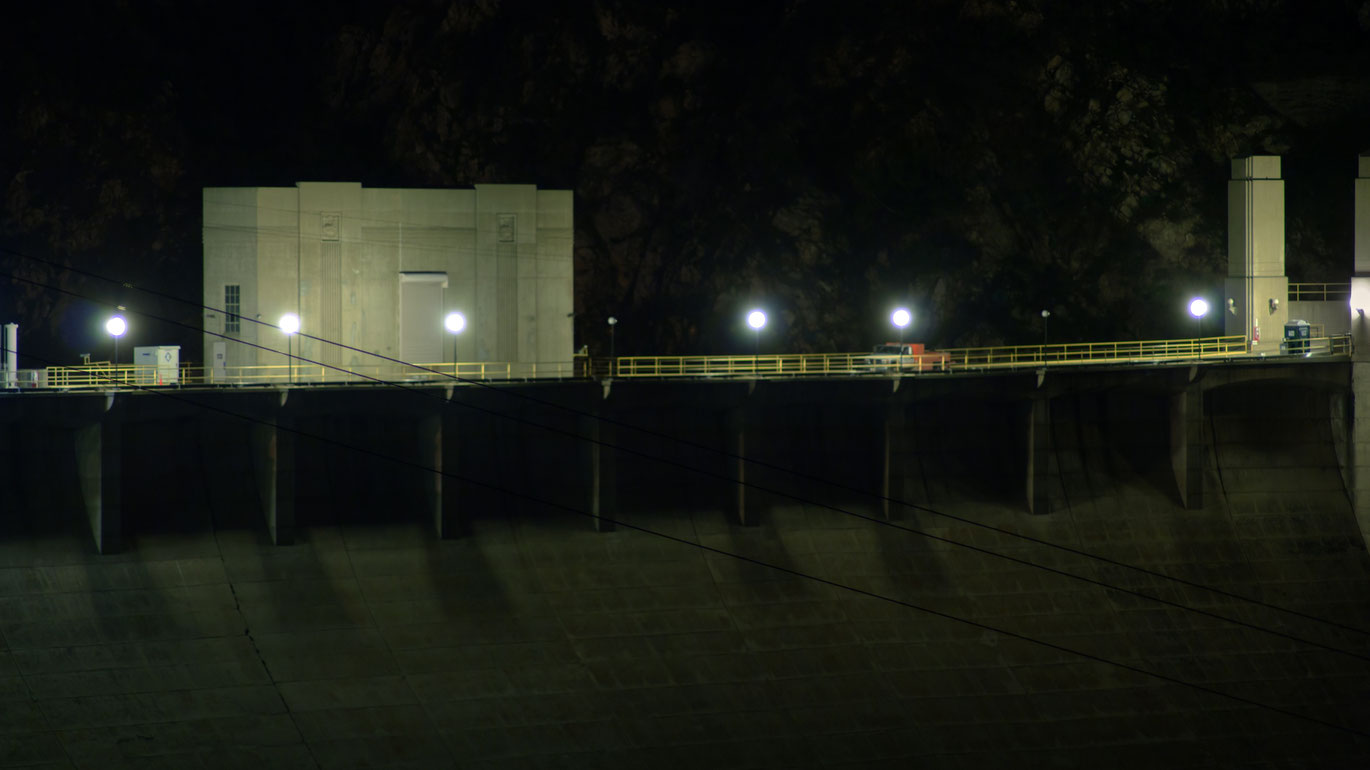RECONNAISSANCE
The term “reconnaissance” generally means an inspection or exploration—that which in the military field can be categorized as “intelligence.” Such connotations also inevitably arise with Johann Lurf´s RECONNAISSANCE; after all, the film is laid out as an intensely perceptive exploration of an area. In silent shots, Lurf offers a clip-like depiction of the Morris Reservoir near the Californian city of Azusa—a huge reservoir, which long served as a testing site for torpedoes , or rather, underwater warfare. RECONNAISSANCE targets details of the terrain in a seemingly motionless way, to unfold a subtle play with light and movement within this “framing.” First is a stone wall on which the incidence of light begins to oscillate almost imperceptibly. Then come parts of the dam, ramp-like concrete colossi, obstructed sections of road, underground shafts; and also medium shots of the surroundings—all sublimely alienated. One alienating effect is the partially abrupt, and partially barely perceptible change of light. The other, much more ghostly, is the sliding movement of individual areas of the landscape or the building. The background of a building thus begins to “wander,” the stone wall “framed” by the dam facility to escape from its frame. Reconnaissance, that is, shedding light on the obscure-monstrous facility, thus always also attempts to include its opposite—as though the independent existence of this functional military building cannot be simply abandoned or exorcised. Or, simply, it can be photographed only at the price of granting the bizarre building fragments their own dynamics, emanating from themselves: which gives the act of reconnaissance a highly remarkable visual-dialectical twist.
(Christian Höller)
Translation: Lisa Rosenblatt
Johann Lurf has spent several months documenting Morris Reservoir near Asuza, California, which functioned for decades as a military torpedo testing site and water source. Torpedos were fired into the water at different angles, using a movable ramp structure. Now that the site has been decommissioned, all that remains are infrastructural oddities. Lurf´s intention has been to produce a video study of the site´s immediate context and its place in the larger conversation of L.A. civil engineering. Several different shots of the dam and its surrounding topography play in sequence, each having a precise focus and a subtle movement, mimicking visual perception.
(Anthony Carfello, MAK Center for Arts and Architecture LA)
In his first film produced outside of his native Austria, Johann Lurf uses static shots to document a closed Californian Army base that once served as a military testing range. The uneasy silence of the footage taken using a long-distance lens and the distance maintained in to the compounds filmed highly augment the impression of latent secrets.
(New Horizons International Film Festival, July 2013)
RECONNAISSANCE
2012
Austria, USA
5 min



